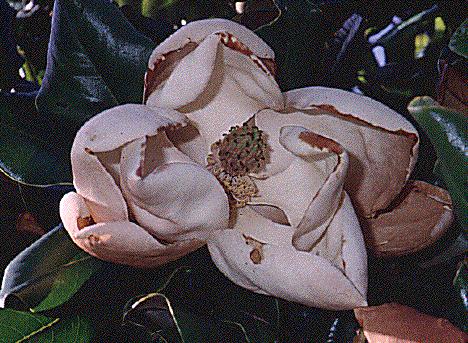Introduction to the Anthophyta
the flowering plants


If you have ever stopped to smell the roses, then you are familiar with the largest group of plants, the Anthophyta. The distinctive feature of this group is the flower, a cluster of highly-specialized leaves which participate in reproduction. Not all flowers are as conspicuous as the Magnolia blossom in the picture above; oaks, ivy, and grasses also produce flowers, but because they are not as showy we often do not notice them.
The flowering plants are important in many ways above and beyond their aesthetic appeal in flower arrangements. Not a day goes by in which our lives are not affected by flowering plants. Nearly all of our food comes from flowering plants; grains, beans, nuts, fruits, vegetables, herbs and spices almost all come from plants with flowers, as do tea, coffee, chocolate, wine, beer, tequila, and cola. Much of our clothing comes from them as well -- cotton and linen are made from "fibers" of flowering plants, as are rope and burlap, and many commercial dyes are extracted from other flowering plants. We also owe them credit for a large number of our drugs, including over-the-counter medicines such as aspirin, prescribed drugs such as digitalis and atropine, and controlled drugs such as opium, cocaine, marijuana, and tobacco.
You can navigate deeper into the Anthophyte groups by selecting Systematics!
You can find more information about floristics, collections, and images of flowering plants by looking through our Listings of Remote Catalogs.
For images covering much of angiosperm diversity, try the flowering plant image collection at the University of Wisconsin.


